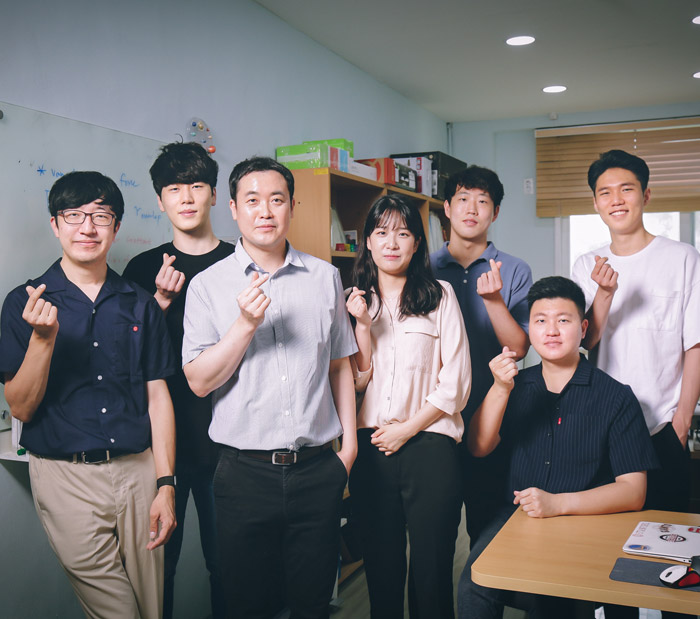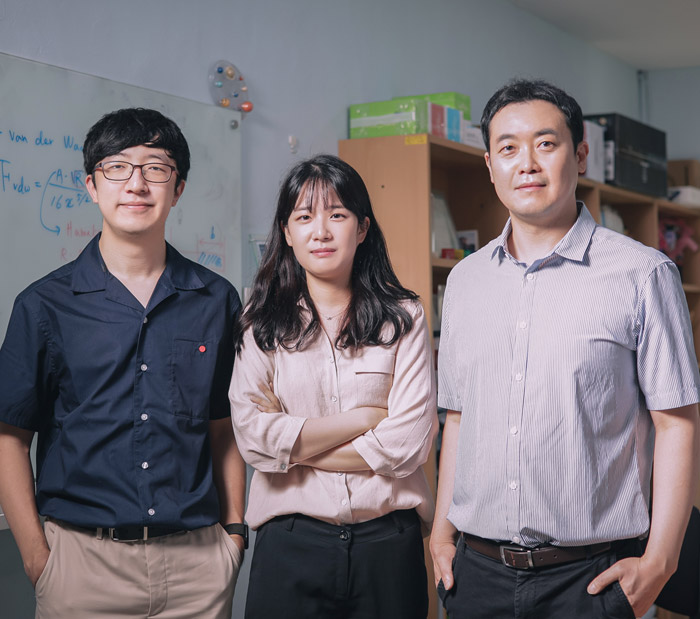Research Stories
A diagnostic patch that can be applied to disease treatment and provide therapeutic feedback was developed
Diving beetle–like miniaturized plungers with reversible, rapid biofluid capturing for machine learning–based care of skin disease, Wet soft bio-adhesion of insect-inspired polymeric oil-loadable perforated microcylinders
Chemical Engineering
Prof.
PANG, CHANGHYUN
Jihyun Lee, Jin Ho Song
The research team of Prof. Changhyun Pang (1st authors: Jihyun Lee, Jin Ho Song, and Dr. Sangyul Baik) revealed the structure and principle of the adhesive cup existing on the foreleg of a male diving beetle. A diagnostic patch that can be applied to disease treatment and provide therapeutic feedback was developed for the first time.
[1] Science Advances June 16 (IF: 14.136); Diving beetle–like miniaturized plungers with reversible, rapid biofluid capturing for machine learning–based care of skin disease, 7(25), eabf5695 (2021), (1st authors: Jihyun Lee and Dr. Sangyul Baik)
[2] Chemical Engineering Journal May 7 (IF: 13.273); “Wet soft bio-adhesion of insect-inspired polymeric oil-loadable perforated microcylinders; 423, 130194 (2021) (1st authors: Jin Ho Song)
The diving beetle, an aquatic insect, has a unique characteristic that distinguishes males and females, namely, the round sticky cups on its foreleg. This adhesive cup adheres well to the surface of the female's curved and rough back during mating in the water, and serves to detect chemicals required during mating. It is a unique evolutionary product of the male diving beetle species. Prof. Changhyun Pang in the Department of Chemical Engineering at Sungkyunkwan University (SKKU) report the new approach for the diagnosis and treatment of skin in advanced biomedical technologies. Related research papers are published in Science Advances (Impact Factor 14.136) journal and Chemical Engineering Journal (Impact Factor 13.273).
Inspired by the male diving beetle, the microscale suction cups achieve repeatable, enhanced, and multidirectional adhesion to human skin in dry/wet environments, revealing the role of the cavities in these architectures. The hydrogels within the suction cups instantaneously absorb liquids from the epidermis for enhanced adhesiveness and reversibly change color for visual indication of skin pH levels. To realize advanced biomedical technologies for the diagnosis and treatment of skin, our suction-mediated device is integrated with a machine learning framework for accurate and automated colorimetric analysis of pH levels.
Furthermore, the research team of Changhyun Pang developed omni-directional non-slip and damage-free soft surgical gripper. For this research outcome, the research team of Prof. Changhyun Pang try to mimic the complex adhesion mechanism of underwater insect creatures, which are composed by suction force and mucus (oil) adhesion. This kind of new approach (oil-assisted suction adhesion inspired adhesive) make the adhesive possible to attach on wet, soft organ surface comparing the previous study.
Prof. Pang said that the skin diagnosis patch with non-powered body fluid capture system can be used in medical data-based disease diagnosis and self-diagnosis medical devices and services.
* From the left Prof. Pang, Jihyun Lee, Jin Ho Song
Fig 1. The diving beetle–like reversible microplungers with biofluid-capturing hydrogel
Fig 2. Adhesion of the DIAs via structural deformation in dry and wet conditions


